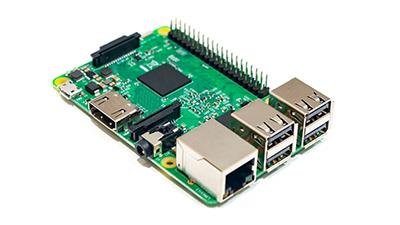On Single Board Computers, If you have never seen a wave in your engineering life, then take time to observe how Single Board Computers are taking over our societal markets. They have become trendy nowadays. If you don’t interact with them in the latest automobile you purchase, then you will meet them embedded in a washing machine, a security system, or even in the hospital. We can’t avoid them; we’ll have to embrace them.
As PCB manufacturers, we can no longer afford to shy away from Single Board Computers; it is time we embrace them. This edition aimed to explore this interestingly growing field of SBCs and how they could help your projects or daily life. Because as WellPCB, we’ve come of age in PCB Assembling, we are willing to extend an olive branch in offering you both advice and a reliable source you could make a quotation. Stick around; it won’t take long; I promise.
Contents
A Single Board Computer At A Glance
1.1: What is a Single Board Computer (SBC)?
A Single Board Computer is a fully functional computer (meaning it has input and output, a memory, and a processor) built on a single PCB (Printed Circuit Board). Unlike desktops and ordinary Personal Computers (PCs), SBCs rely on simple architectures that do not give room for expanded peripheral functions using expansion slots. The ARM (Advanced RISC Machine) processor architecture with lower processing speeds and significantly low power consumption powers most SBCs. Then again, some modern SBCs conform to the x86-Intel processor architecture, as we shall explore in the ensuing chapters.
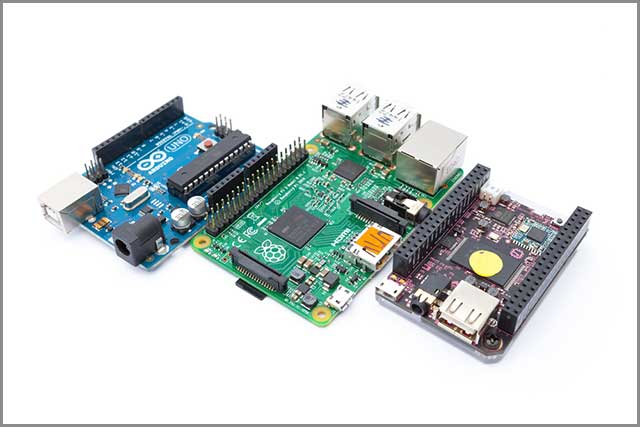
1.2: What Are Their Uses?
As outlined before, SBCs can be utilized to perform any task that an ordinary computer can execute. At their inception (around May 1976), SBCs were initially developed to aid learning. But with improvements in technology, they evolved to run various applications like ordinary computers. Intelligence systems like those that run intelligent cars, innovative security systems, and automated devices, among several other such applications, rely on SBCs. Besides, they are still valuable for learning, prototyping, and experimentations among learners and hobbyists.
1.3: Why Are They Preferable Over Ordinary Computers?
It is critical to note that SBCs, generally have pretty inferior capabilities to their PC counterparts. Then again, they have kept increasing their market demand and their processing capability over the years. Because of their varied uses, one can predict that SBCs might overtake the popularity of PCs in the future. Now, various reasons make Single Board Computers more preferable to the traditional PCs. Some of the notable reasons include:
They are portable. Top in the list of their peculiarity over PCs is their tiny size. Raspberry Pi, one of the world’s popular SBC, is small enough to fit the size of a palm. Thanks to their small size, they are portable, and they can be programmed then embedded on various automated/intelligent systems.
They are cheap: Most SBCs are very cheap to acquire. When compared to conventional computers, Single Board Computers are significantly affordable to develop than PCs. Usually, with a reduction in the buying price, there is always a tendency for the demand for such a product to soar. Similarly, inventions on the use of such products increase. SBCs are now readily available and used by various electrical engineers and hobbyists for prototyping. At the moment, you could even order some customized SBC boards from us at an incredible bargain.
They consume less power than PCs. When evaluating SBCs against conventional computers on power consumption, you will undoubtedly find a very significant reduction in power consumption. An average SBC consumes just eight watts of power instead of 400 watts of energy consumed by the traditional computers when running on a “power saving” mode. On this angle, SBCs are preferable over conventional computers. Possibly, this low power consumption feature makes them adorable to embed in other computerized systems.
1.4: The SBC Wave Is Already Sweeping Off PCs
If numbers do not lie, then the best time to have embraced SBCs was in 2013; and the second-best time to embrace them is now. The two graphs above show a contrast between how people purchased PCs vis-à-vis carrying out Do-It-Yourself (DIY) projects using SBCs within the same period. While the market demand for PCs is steadily declining, the need for SBCs to carry out experiments is soaring daily.
A simple analysis of the trend on people’s buying habits does depict that SBCs are not just the wave of the future; SBCs are the current wave that will become a tornado in the future. We cannot afford to be swept; it is time we embraced the wave and swam along. Unfortunately, most engineers still do not see it coming.
Perhaps the main reason SBCs are on the rise and are still going to rise higher is that SBCs allow people the freedom to program computers. People obsessed with DIY wish to invent and program their computers to suit them better in their specific environments. SBCs attain this freedom goal by being cheaper, portable, and programmable. SBCs also have lower power consumption.
In the following chapters, we will now consider in detail the different processors and architectures of Single Board Computers and a comparison of the best SBCs available at the moment.
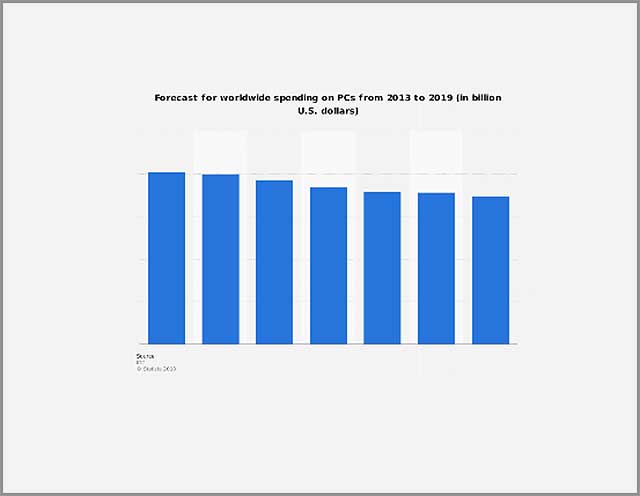
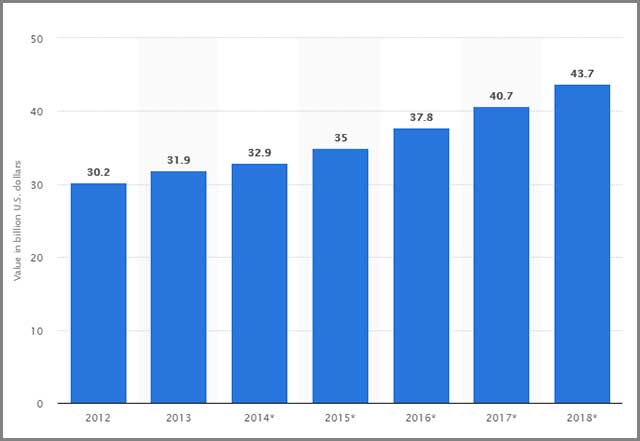
Processor Architectures Of Single Board Computers
ARM, Intel, and Freescale Power Architecture Are the three main processor designs that power Single Board Computers. As I had hinted before, most SBCs run on ARM processors. A significant amount of the remaining is powered by Intel and a few by the Power Architecture. Let us begin by examining the ARM processor architecture.
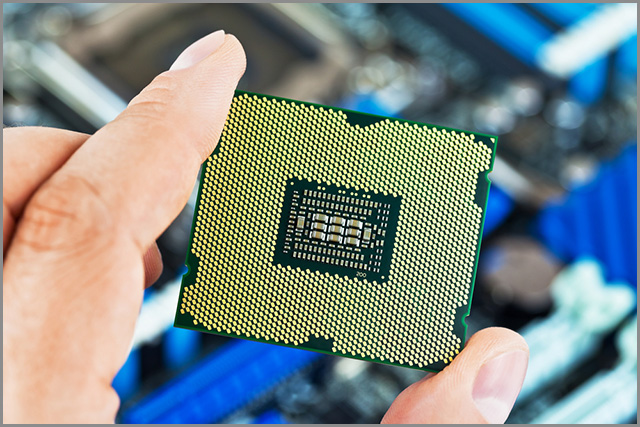
2.1: The ARM Processor Architecture For Single Board Computers
In essence, the ARM is a CPU architecture that falls under the family of RISC (Reduced Instruction Set Computers) developed by Advanced RISC Machines (ARM). Acorn Computers developed the design in the 1980s.
ARM produces both 32-bit and 64-bit processors like Intel. However, ARM processors are designed to perform at higher speeds by processing Millions of Instructions Per Second (MIPS). The processors achieve better processing by getting rid of additional instructions and optimizing processing paths, thus achieving better performance at lower power consumption.
ARM processors tend to have a lower throughput than the leading X86 Intel processors; however, they have more applications than X86 processors due to their ability to utilize power consumption.
In the current market, ARM processor architecture is the most popularly used processor architecture for Single Board Computers due to their lower power consumption. These processors are famous for open-source operating systems like Linux and Android. They run on several defense, aerospace, and consumer electronics products, such as smartphones, multimedia players, and fitness wearable devices, among other devices that utilize SBCs.
Most of the leading market SBCs like The Raspberry Pi, Banana Pi, Orange Pi, BeagleBoard, Board, among several others, use these processors.
2.2 Single Board Computer—Intel Processors
Intel leads in manufacturing processors for Personal Computers. In recent years, the tech giant has made progress in manufacturing high-speed processors for SBCs.
The fourth-generation Intel Core and X86 processors have recorded a higher throughput in processing graphics and processor instructions than ARM processors. Unlike ARM SBCs that hold many simple processors that share the workload (known as “scaling out”), Intel SBCs are designed to hold few high-capacity processors (at times called “scaling-up”) that can handle complex tasks with ease.
Because of their high-capacity processing, Intel processors are utilized in fields that demand high accuracy and faster processing speeds like automation markets, medicine, defense, transportation, and aerospace (like in crewless vehicles).
Despite their high throughput and processing capability, Intel processors are still unpopular in the SBC market owing to their high pricing and higher power consumption when compared to ARM processors. However, most Intel Processors have a drawback of overheating. Thus, for projects that require certification to use in hot environments, it is advisable to consider designing a cooling system or even use a different processor alternative to Intel.
Some of the leading Small Board Computers powered by Intel include those produced by Intel Company like Intel Galileo generations and The UDOO Company like UDOO Dual Basic, UDOO Quad, and UDOO X86 advanced.
2.3: Freescale Power Architecture
Freescale Company produces the Power Architecture processors. They follow the RISC processor architecture like ARM processors. They perform like ordinary X86 processors. Their design aims at minimizing throttling.
While Intel processors face the challenge of overheating due to throttling in larger workloads, Power Architecture processors easily sail through processing without consuming too much power or overheating. Then again, these processors are rarely used among SBCs. At the moment, The Power processors run on SBCs like The MIPS Creator C120 Small Board Computer.
2.4: Single Board Computer—Chapter Conclusion
So far, we have done an overview to understand Small Board Computers, their uses, and their relevance in the future of computers. We have also taken time to study the three main architectures of SBCs based on their processors. In the next chapter, we will begin comparing specific SBCs or SBC brands to determine the one that is likely to perform better than the others regarding speed, throughput, and cost of buying.
Classification Of The Best Single Board Computers
If you wanted to run an IoT project, which board could you choose among the thousands on sale now?
Honestly, owing to the high number of SBC manufacturers and designers, you might sometimes find it hard to choose a board from the long list of boards. Every manufacturer seems to present superior designs or features. In such cases, you might need to invest more in information before you can place an order, i.e., pay more attention rather than more money. And that’s why we invested some time to analyze various SBCs and help you choose the best among the best brands of Small Board Computers in our markets. We’ll skip all other explanations and dive right into our top SBC listing.
3.1: Top 3 Small Board Computers of All Time
Rank 1: Raspberry Pi 3 Model B+
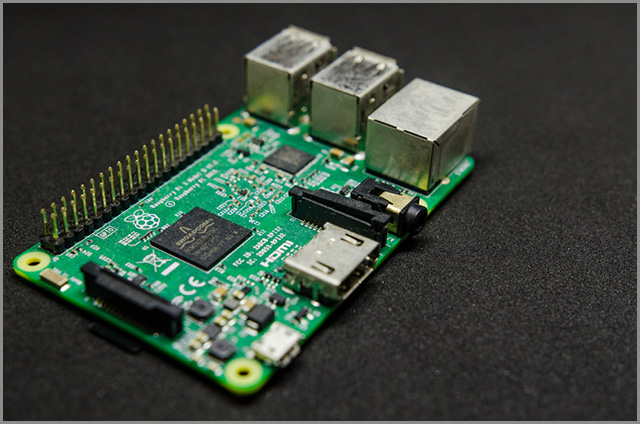
Raspberry Pi is the undoubted “big boy” in the industry of Small Board Computers. The company is reputable for releasing highly reliable boards with unwavering community support of their board releases. Its latest board release: The Raspberry Pi 3 Model B+, improves the famous Model 3B. It boasts of the following features:
Features
- Processor: 2.4GHz (and a separate option for 5GHz for the network), quad-core ARM processor that supports 64-bit OS.
- USB: 4x USB 2.0
- Network: Gigabit Ethernet (over USB with a maximum speed of 300mbps), Bluetooth 4.2/BLE
- Other ports: DSI display port and a CSI camera port.
It has a hit on:
- Excellent community support: Raspberry boasts of a great onine community that always responds to your challenges. Because it is more popular and uses open-source programs, there is hardly a challenge you will encounter with Raspberry has never been experienced by other developers. Most of the problems you will face could get solved by simple online researching.
- It has faster processing capabilities.
- cheap to acquire.
- It has a fast Ethernet speed.
It has a miss on:
- Poor Bluetooth connectivity: Even though new into the market, the board has already faced reports of unreliable Bluetooth connectivity.
What I think About Raspberry Pi 3 Model B+
Raspberry was and remained the king of Single Board Computers. Its latest model is affordable and should be helpful in various experiments. However, judging from the model’s features and strengths, the Model B+ is recommended for projects requiring fast internet connectivity, like projects involving GSM or remote monitoring/control.
Rank 2: Udoo X86 Ultra SBC
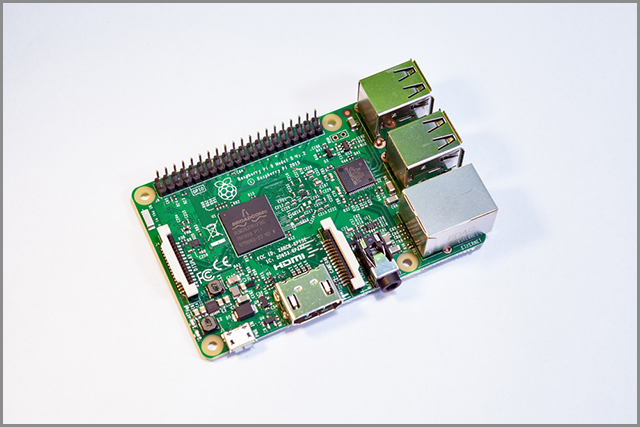
This little “boy” spits both class and unimaginable power. Udoo is one of the few SBCs that Intel processors power. Its buying price is a lot higher than even PCs, and its processing speed is fast enough to outdo most PCs as well. Honestly, it could be hard to summarize all its features, but here are some of the most notable features:
- Processor: Intel Pentium N3710 2.56 GHz Quad-Core
- RAM: 8GB
- ROM: embedded SD-card slot that supports up to 32GB
- USB: 3 X USB 3.0
- Graphics driver: Intel HD Graphics 405
- Power: 12V, 3A.
It has a hit on:
- It has excellent processing capabilities: with a 2.56 GHz Intel processor and an 8GB RAM, Udoo ranks high as a champion of its processing speed. The SBC can run common software applications like a standard PC without facing any processing hurdles.
- It offers excellent graphics and multimedia capabilities
- It is compatible with Arduino: Udoo is consistent with the good old Arduino micro-controller board for IoT experimentations. This ability makes it ideal as it does not require transitioning to use in projects or experiments.
- It has a larger storage capacity than an ordinary SBC.
- Udoo has good community support to back up its products.
It has a miss on:
- It is expensive: this SBC is expensive than many SBCs. Thus, you might not wish to buy it for your experimentations.
- It consumes more power than an ordinary SBC. Even though its power consumption is lower than that of a PC, it is notable that it still consumes more electricity than most SBCs. Thus, it is unworthy of use in projects that require less electricity to run.
What I think about Udoo X86 SBC
Udoo is still a growing community. This SBC is on record for shelving an 8GB RAM and a 2.56 GHz Intel processor on an SBC. Because of its superb features and high buying price, I would recommend it to industrial users instead of hobbyists and learners.
Rank 3: Qualcomm Dragon Board
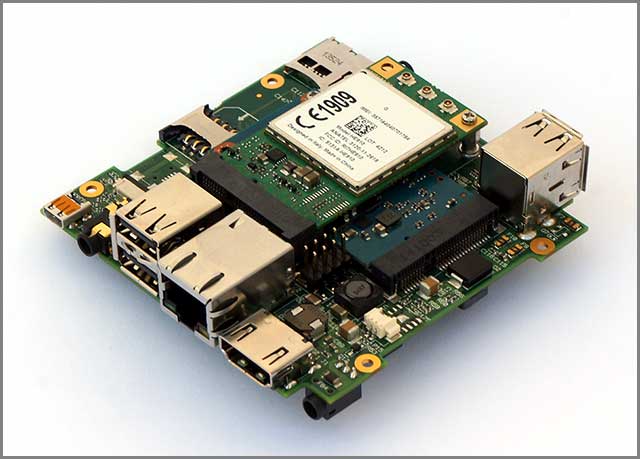
Qualcomm Dragon is not a very popular SBC. It is compact, supportive of various platforms, and it is powerful than ordinary SBC alternatives. Then again, it has good features to add to your project development menu. It has the following features:
Features:
- Processor: Quad-core ARM processor with speeds of up to 1.2GHz (and 2.4GHz for the network). Supports both 32-bit and 64-bit OS alternatives
- RAM: 1GB
- USB: 2 x USB 2.0 or a Micro USB
- Network: On-Board Wi-Fi 802.11
- Other ports: HDMI display port.
Qualcomm Dragon has a hit on:
- Fast processing speed
- Compatible with more software applications and operating systems including Linux, Windows, and Macintosh
- It has fast network connectivity.
It has a Miss on:
- A high cost of buying: Even though it has got features that take after the Raspberry Pi 3 model B, it has a significantly higher cost of acquisition than Raspberry.
- It is not very popular. Because it is not popular in the market, it lacks a supportive community to back it up. Thus, it is not ideal for learners.
What I think about Qualcomm Dragon Board
Qualcomm is an excellent board for projects that require SBCs. It is ideal for industrialists as it is stable and supports other ordinary computer applications.
3.2: The Cheapest Single Board Computers
When you are running on a tight budget but would still love to have your hands on an SBC, there are a couple of cheap SBC options you should consider checking out. Here are some of them:
Pine A64 SBC: one of the rarest, most powerful SBCs I (personally) have seen in the market that cost about $15 is the Pine A64. Its design takes much after the popular Arduino Uno.
If you seek to have an IoT project run with impressive rates, but at a lower cost, you should consider The Pine A64. It supports up to 2GB RAM and runs on an ARM Cortes A53 Quad-core processor with a speed of 1.2GHz that can support 64-bit applications. It has excellent network speeds of about 1000 Mbps. The only bone with Pine A64 is its remote online support if you develop issues with the board.
Raspberry Pi Zero: The Raspberry Pi Zero costs just about five dollars. It has 512MB RAM and a processor speed of 1GHz single-core. It has 40 GPIO pins. Pi Zero is ideal for learners, hobbyists, and even engineers when carrying out simple experiments. The Pi Zero is recommended for its easy availability and massive community support.
Nano Pi NEO: Nano Pi NEO is extremely small in size and has limited features. It has 256/512 MB RAM and a 1GHz processor speed. It supports Ethernet, Micro-SD, and VGA. Nano costs about seven dollars and keeps approximately 40 GPIO pins. However, it has a significantly slow processing capability and minor community support to back it up.
3.3 Single Board Computer—The Most Powerful Single Board Computer
When you get tired of playing around with Arduino boards and Raspberry Pi microcontrollers, and you would love to go the world of the limitless, you will need to check out for more powerful, faster options and (often) more expensive. One such Small Board Computer I know of is the Intel NUC Kit (Intel NUC NUC7i3BNH). Even in a business environment, this device is powerful enough to rival some computer servers (I assume it is more powerful than an ordinary computer). Here is how it performs:
The Intel NUC NUC7i3BNH Single Board Computer Kit
Features:
- Processor: it runs on Intel’s 7th generation processor (Intel Core i3-7100U).
- RAM: It has two DDR4 SO-DIMM Sockets (support of up to 32GB at 2.133 GHz)
- USB: it has 4 X 3.0 USB and 2 X 2.0 USB.
- GPU: It uses Intel HD Graphics 620.
- It has both SATA and HDMI ports
So far, the NUC kit is the only board that has dared to offer a Micro-SD reading speed of up to 3GB per second and a seventh-generation processor onto a single panel. However, it is limited because it is a kit, and it is open to vendor part adjustments that can either increment its performance or lower it.
It is an unpopular SBC to most engineers owing to its expensive buying cost. Nevertheless, if you are interested in real-life applications that require high speeds and more storage space, then you could offer the Intel NUC NUC7i3BNH a try.
Conclusion
Single Board computers have become both accessible and valuable over time. As we have already explored, there are several instances you could incorporate SBCs into your projects. We have also studied some of the most excellent Single Board Computers that the current market offers.
Now, perhaps after going through it, you might have had a few queries that might require answers; please, feel free to reach out to us through our official WellPCB website. If you want us to get you a new Single Board Computer PCB printout, please feel free to reach out to make an online quotation at an incredible bargain.
